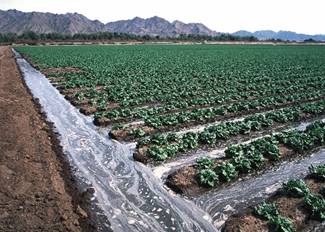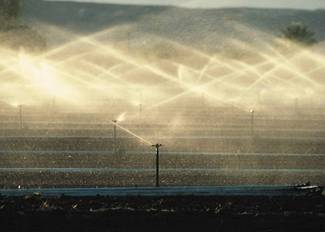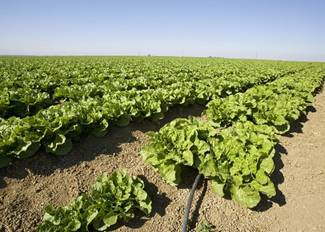Competency Area 3: Drainage and irrigation AEM
PO 24. Know the four methods of irrigation and the advantages and disadvantages of each with respect to different soil conditions and crop types.
|
The four methods of irrigation are:
|
|
|
Surface irrigation consists of a broad class of irrigation methods in which water is distributed over the soil surface by gravity flow. The irrigation water is introduced into level or graded furrows or basins, using siphons, gated pipe, or turnout structures, and is allowed to advance across the field. Surface irrigation is best suited to flat land slopes, and medium to fine textured soil types which promote the lateral spread of water down the furrow row or across the basin. |
Surface irrigation |
|
Sprinkler irrigation |
Sprinkler irrigation is a method of irrigation in which water is sprayed, or sprinkled through the air in rain like drops. The spray and sprinkling devices can be permanently set in place (solid set), temporarily set and then moved after a given amount of water has been applied (portable set or intermittent mechanical move), or they can be mounted on booms and pipelines that continuously travel across the land surface (wheel roll, linear move, center pivot). |
|
Drip/trickle irrigation systems are methods of microirrigation wherein water is applied through emitters to the soil surface as drops or small streams. The discharge rate of the emitters is low so this irrigation method can be used on all soil types. |
Drip/trickle irrigation |
|
Subsurface irrigation |
Subsurface irrigation consists of methods whereby irrigation water is applied below the soil surface. The specific type of irrigation method varies depending on the depth of the water table. When the water table is well below the surface, drip or trickle irrigation emission devices can be buried below the soil surface (usually within the plant root zone). |
Above images courtesy of NRCS http://photogallery.nrcs.usda.gov
Quick Links
- Competency Area 1: Basic soil properties
- Competency Area 2: Soil hydrology AEM
- Competency Area 3: Drainage and irrigation AEM
- Competency Area 4: Soil health and compaction
- Competency Area 5: Soil conservation AEM
- Competency Area 6: Watershed hydrology AEM
- Competency Area 7: Non-point source pollution AEM
- Competency Area 8: Concentrated source pollution AEM
- Competency Area 9: Conservation planning AEM




